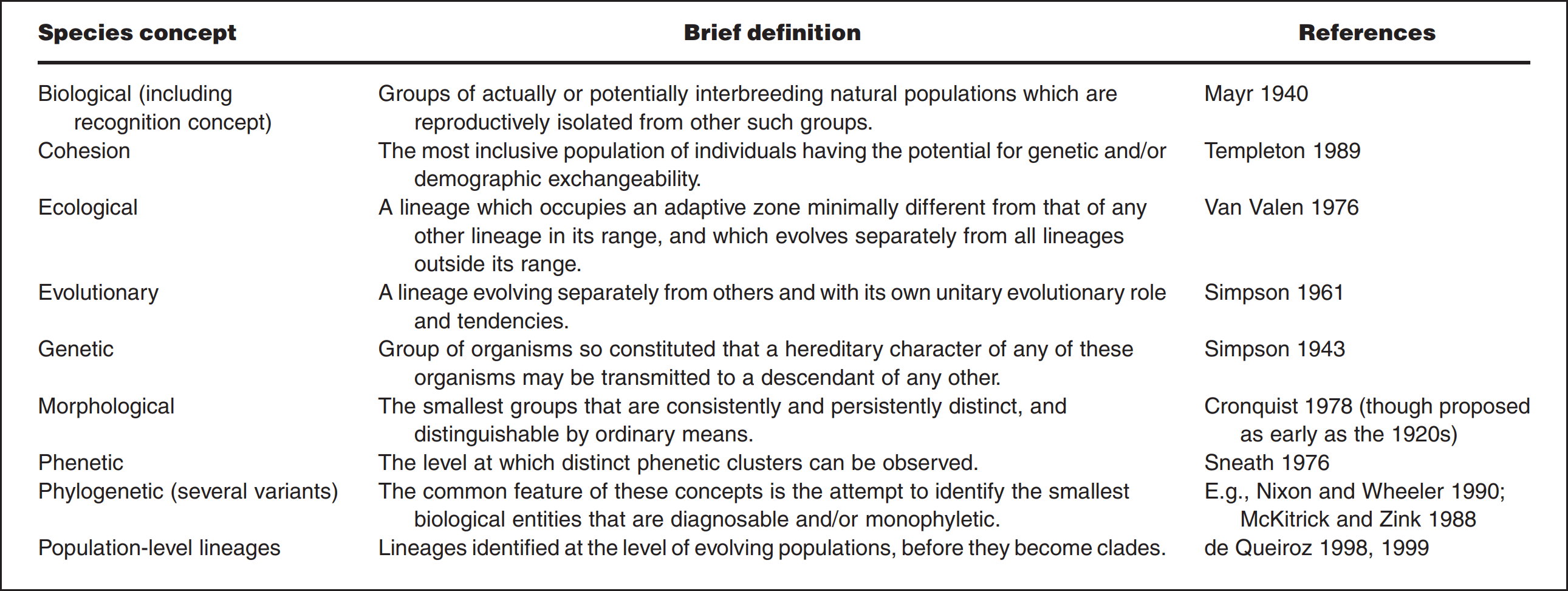Interbreeding
Defining species by the criteria of not being able to breed is problematic:
- The concept loses its meaning in phylogenetic prospective, since closely related species were able to breed between themselves in past, during the speciation event (an "event" that often lasted hundreds or thousands of generations)
- The definition is problematic for simpler life forms, such as bacteria exchanging genetic material, or viruses where different species from the same family may differ only quantitatively (e.g., HIV vs. SIV).
(Excellent exposition of this view on the difficulty/impossibility of defining species is presented in this answer, as well as in the answer by @SPr below.)
Emergence
On the other hand, species are not reducible to merely accumulation of genetic variation. When looked from more general prospective (e.g., here), species are an example of an emergent phenomenon (the same inability to interbreed is a qalitative rather than quantitative difference.) We thus should be able to define a critical boundary between what is the same species and not, although this boundary does not necessarily lie in time domain. Inability to interbreed is a vague definition, since it may be due to very different reasons: phisiological, genetic, assortative mating, etc.
Operational concepts
In some domains we could choose to define species based on a criteria of convenience. E.g., considering an ecological community one may define as species the organisms that cannot interbreed, but also those that do not share the same habitat. While such an operational definition may work well for practical studies, it is not unique and subject to change from one study to another.
Are species an emergent property or an ensemble of quantitative differences? Can we give a robust definition of species/speciation? Can we define a domain of applicability of such a definition? (e.g., defining the forms of life for which species can be defined)
Background
When speaking of emergent properties, I tried to skip some techncialities that led me to this question, which is why this part of my question may appears somewhat vague. So I would like to add more details here.
Phil Anderson in his article Broken symmetry, emergent properties, dissipative structures, life: are they related? formulates emergence in mathematically rigorous terms as a kind of phase transition in a non-equilibrium system. Phase transitions are characterized by summetry breaking, i.e., appearance of a completely new property in a system. What I termed previously robustness is, in Anderson's language, called phase rigidity.
The question is thus: whether speciation is a kind of such phase transition (as claimed, e.g., in the Melamede's article, already cited earlier) OR whether it is merely incremental accumulation of changes. (However, in such a formulation question is unlikely to be answered either in physics or biology communities.)
For more context: in his article Anderson criticizes Ilya Prigogine's school on a few technical points, but it is Prigogine and his co-workers, who are at the origin of such thinking. In particular, they have multiple publications on the subject of such disspative structures, and non-equilibrum thermodynamics more generally. Many of their articles are available by googling.
Update
After some discussions in the comments: the crux of the question is whether (or tow hat extent) speciation occurs via abrupt or incremental changes.
- Organisms differing by abrupt acquisitions, such as presence of a nuclear membrane or an extra chromosome, are unambiguously assigned to different species (and cannot breed or reproduce viable offspring).
- On the other hand, most ambiguous cases seem to be those where the "species" differ only by a incremental changes (such as the number of nucleotide substitutions/insertions/deletions).
Ring species could be a possible test case: if the species at the beginning and the end of the ring cannot breed, do they always differ only by incremental changes? If one species differed by a number of chromosomes, it likely wouldn't be able to breed with any of the others.
Update 2
Here is a useful answer: species can be defined from many different viewpoints.


